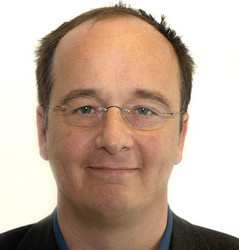Scientists lift the veil on sub-seabed carbon storage impact on local ecosystems
European seabeds are often scarred or fractured, yet oil industries in the North and Barents seas are storing CO2 below these seabeds to reduce their emissions. Is such sub-seabed CO2 storage a viable solution? A team of EU scientists recently shed light on this matter. With the objective of limiting global warming to +2°C by 2050 looking increasingly out of reach and with a new UN climate conference on the horizon, the EU and its international partners are under increased pressure. All suitable solutions to reduce CO2 emissions have to be contemplated, and carbon capture and storage (CCS) — a set of technologies preventing CO2 from reaching the atmosphere by storing it in suitable underground geological formations — is one of them. In its recent Communication for an Energy Union, the European Commission acknowledges the need for enhanced support for CCS. The technology has so far failed to develop as initially expected, largely due to high investment costs and limited incentives as a result of low carbon prices. But there is another aspect of CCS that still leaves potential investors and decision-makers in the dark: the question of leakage, especially in sensitive storage locations such as seabeds. For the past four years, a team of EU scientists have been monitoring existing CCS installations in the North and Barents Sea to determine the likelihood of a leakage scenario and its impact on local ecosystems. ECO2 (Sub-seabed CO2 Storage: Impact on Marine Ecosystems) scientists identified possible pathways for CO2 leakage, monitored seepage sites, traced the spread of CO2 in bottom waters and studied the responses of benthic animals and plants to CO2. In early May, the project compiled these observations into a guide for the selection and monitoring of storage sites and presented it to the European Union. Klaus Wallmann, coordinator of ECO2, discusses the project’s results and the team’s plans for further research in the field. What pushed you to do research in this area? In Europe, most of the CO2 captured at power plants will be stored below the seabed. It is thus important to understand whether CO2 will remain in sub-seabed storage formations or will leak out to damage the ecosystem at seabed level. What would you say is the most innovative aspect of the project in this regard? The major new element of the ECO2 approach is the ‘Propensity to Leak Factor’ which has been developed by combining a compact description of the storage complex and heuristic techniques accommodating for the large number of parameter uncertainties. Since it is not possible to simulate all relevant geological features, processes and events with the modelling software currently available, we found a way to realistically estimate how likely a leakage is at a specific CCS installation. At which locations did you conduct your research and why? We investigated real storage sites in the North Sea and Barents Sea off Norway where millions of tons of CO2 have been separated from natural gas and stored in sub-seabed geological formations for many years. How did you proceed to detect leakage from these sites? A wide range of sea-going instrumentation was applied in the project to detect leakage. The instruments were deployed from research vessels but also from remotely operated vehicles (ROVs). Cutting-edge technologies used by the project include P cable 3-D seismic instrumentation for high-resolution imaging of pathways for fluid flow getting through the overburden covering the storage formations, hydro-acoustic methods to detect gas bubbles ascending from the seabed and chemical sensors to measure the levels of dissolved CO2 in seawater. Have you identified potential room for improvement in storage techniques and technologies? Yes, we published a best environmental practice guide that can be downloaded at http://oceanrep.geomar.de/28739/. There we describe how sub-seabed storage sites should be selected and monitored. Most notably, when selecting sites, we recommend to avoid geological structures that may serve as conduits for formation water and gas release, geological formations containing toxic compounds and low-energy hydrographic settings with sluggish currents and strongly stratified water column. Also, storage sites should be established far enough from valuable natural resources or areas in which biota is already living at its CO2 tolerance limits. The guide also stresses that overburden, seabed, and water column should be monitored using 3-D seismic techniques, high-resolution bathymetry or backscatter mapping of the seabed, hydro-acoustic imaging of gas accumulations and outlets, video and photo imaging, and chemical detection of dissolved CO2 in ambient bottom waters. Most of these technologies are either already available or will soon become state-of-the-art. ECO2 essentially focused on leakage impact over marine ecosystems. What are your conclusions? We learned that if leakage were to occur the impact on the marine ecosystem would be limited to the immediate surroundings of the leak. In this small area sensitive organisms would die and would be replaced by other, more resilient organisms. At a lateral distance of more than 100 metres from the leak, the impact would be very small and barely detectable since the leaked CO2 would rapidly be diluted by bottom currents. Based on the results of the project, would you say that sub-seabed CO2 storage is a viable technique? Yes, we could not find any signs of leakage at the storage sites which are currently operated. It is possible that leakage will occur should hundreds of new storage sites be opened and operated in the future. However, only a very small fraction of the stored CO2 would leak out and the impact on the marine environment would remain small and local. What are your plans now that the project has come to an end? There is still a lot of work to do: We need to better understand how leakage rates are controlled by geological structures and physical processes in the overburden. Moreover, monitoring techniques should be further improved to enhance their sensitivity and reduce operational costs. For further information, please visit: ECO2 http://www.eco2-project.eu/
Countries
Germany

